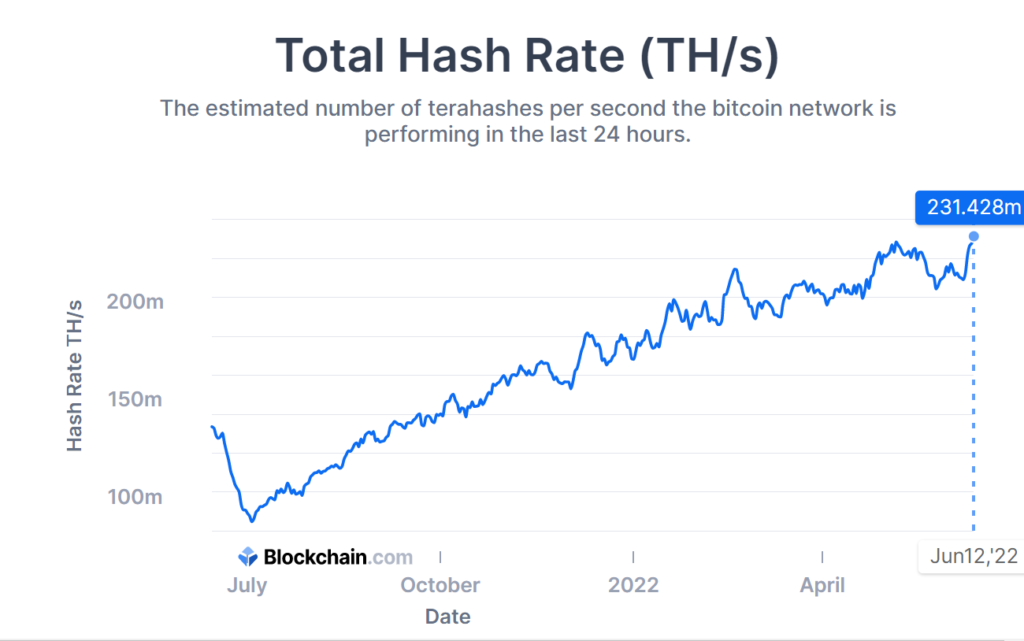Bitcoin (BTC) hash rate, a network security measure based on computing power for mining, achieved a new all-time high (ATH) of 231.428 ExaHash per second (EH/s) amid an ongoing bear market that witnesses BTC price plunging below the critical $25,000 mark.
Hash rate is directly proportional to the computing power of mining equipment for confirming transactions, which deters bad actors from manipulating on-chain transactions. Complimenting the new hash rate ATH, the Bitcoin network difficulty stands at a strong position of 30.283 trillion.
Some of the most popular Bitcoin mining pools based on market share include Poolin, AntPool, F2Pool, ViaBTC and SlushPool. However, a majority of the total hash rate is contributed by distributed miners, shown as ‘Others’ in the graph below.

Despite the market crash that threatens to wipe numerous crypto projects out of existence, the Bitcoin ecosystem continues to strengthen its core by consistently recording new ATHs for hash rate, network difficulty and network capacity.
In addition, the Bitcoin Lightning Network — the layer-2 technology built on Bitcoin, too increased its capacity to 4,000 BTC, furthering its goal to enable faster and cheaper peer-to-peer BTC transactions.
With continued support from miners, traders and developers, Bitcoin remains well-positioned to be hosted on the most secure blockchain network in the world.
Related: Lowest weekly close since December 2020 — 5 things to know in Bitcoin this week
Block subsidiary TBD announced plans to build “Web5,” a new decentralized web centered around BTC, underscoring founder Jack Dorsey’s belief that the largest blockchain network will play a major role in the internet’s evolution.
1/ Jack Dorsey’s @TBD54566975 unit has just announced it is building “Web5”.
This new decentralized web leverages #Bitcoin to put users back in control of their data and identity – once and for all.
Here’s a thread with all you need to know … pic.twitter.com/TpW8OvuyKX
— Namcios (@namcios) June 10, 2022
Unlike Web3’s aim to decentralize the Internet, Dorsey envisions Web5 as an identity-based system that runs only on the Bitcoin blockchain. As previously explained by Cointelegraph, based on TBD’s prototype documents, Web5, as a decentralized web platform (DWP) allows developers to create decentralized web apps via DIDs and decentralized nodes.


